
Predicting the return of corporate travel would be a cinch if foretelling the future was foolproof. No one, however, has that extraordinary prescience and even if they did, the future is, at best, murky. The continuing popularity of work-from-home arrangements, the COVID-19 induced reluctance of both individuals and companies to get back out on the road, and issues throughout the travel supply chain are all converging to create a less-than-hospitable environment for individual business travelers. “Before you get corporate travel back, you have to get people back to the office,” said Daniel Lesser, President and CEO of LW Hospitality Advisors. “It’s going to be a bit of a slog, at least until Labor Day.” Among the short-term problems, he continued, is airline flight capacity. “A lot of it will have to do with air lift. Carriers are being careful about yield management,” he said. However, Lesser added, “The summer is going to be phenomenal [for leisure travel] but the rubber will hit the road after in terms of group and corporate business.” Shifting BusinessLWHA’s COO and Principal Evan Weiss sees an even more dramatic delay on the horizon. “At the beginning, I thought the recovery would come first with leisure business, then leisure group, corporate transient and then corporate group,” he said. “But there’s been a paradigm shift. Companies now can cut back their travel by, for example, having two in-person board meetings and two on Zoom.” He continued, “After leisure, which is certainly back, we’re thinking corporate groups will be next to come back, and then corporate transient business.” That creates problems for hoteliers. In the U.S., the corporate average room rate in February 2020—the last full month before the coronavirus squeezed the life out of most of the global hotel industry—was $175.15. A year later, it stood at $111.03, down 35.6% year-over-year, according to HotStats data. In Europe, in February 2021, the corporate rate was €77.30, down 35.2% YOY. Meanwhile, in China, corporate travel didn’t have the dramatic swoon seen in other parts of the world. Its lowest point was in April 2020, when the corporate rate hit $65.65, a 24.8% YOY decline. As of April 2021, the $73.03 corporate rate was up 11.2% on the year prior, but still 16% lower than April 2019. The absence of corporate travel is equally disadvantageous since road warriors are typically higher-spending guests than their leisure counterparts. “Corporate folk pay at the last minute, then they book the Ritz-Carlton, and they’re often the ones who drink the most. If you lose that, it’s problematic,” Weiss said. But Chris Green, CEO of third-party management company Chesapeake Hospitality, has a rosier outlook on the return of corporate, framing it in the context of the domino effect. “Once a big player like Bank of America or Deloitte says ‘As long as you’re vaccinated and feel comfortable, you can travel,’ then it’s off to the races,” he said. “I believe companies will say ‘If you’re in a client-facing role, you have to get out there.’” Still, some timid travelers could remain skittish if they don’t feel safe and comfortable back at a hotel, Green noted, meaning properties must get the word out on the extraordinary efforts being taken to keep COVID-19 at bay. To do so, Chesapeake is “asking key questions about traveler confidence and experience and then using responses in sales and marketing presentations,” said Green. The company also is encouraging guests to share their experiences on travel-review sites. “We’re cleaner, safer and more sanitized than we’ve ever been,” Green said. “That needs to be the front-facing message because companies must feel certain that the hotels where they’re putting travelers are good citizens.”
Create: May 25, 2021 Edit: May 25, 2021 Hotel Management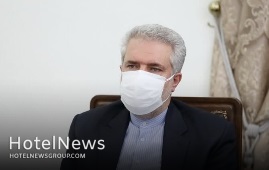
Iran has the potential to become a destination for vaccine tourism regarding considerable efforts the country is making to develop series of domestic COVID-19 vaccines, the tourism minister Ali-Asghar Mounesan has said. There is a capacity to add ‘vaccine tourism’ to the ‘health tourism basket’ of the country after all [Iranian] people are received vaccines…. and the move could fuel a boom in the tourism sector of the country.” In the near future, we will possess the capacity to provide foreigner travelers with the COVID-19 vaccine, especially those from the neighboring countries,” Mounesan said. The Islamic Republic is among the first countries which started developing a vaccine against coronavirus, and now four companies are endeavoring to release their products by September and inoculate the whole population. Out of 16 vaccine production cases, four cases have received a code of ethics and are undergoing clinical trial; it is hoped that another three to four cases will succeed in receiving license by September. According to available data compiled by the tourism ministry, the number of foreign visitors to Iran plunged 94% in the first nine months of the past Iranian calendar year (ended March 20, 2021) as the coronavirus pandemic takes a heavy toll on the tourism industry. The coronavirus epidemic has ruined more than 1.5 million jobs in Iran’s travel sector, tourism minister Ali-Asghar Mounesan said in December. “Over 1.5 million jobs have been lost in the tourism sector of Iran due to the COVID-19 disease…. Many of the tourism-insiders are now unemployed or they are staying at home,” according to Mounesan. Tourism [industry of Iran] was growing before the corona [outbreak], its revenues reached $11.7 billion in 2019, which accounted for 2.8% of GDP, near the average share of tourism in the world GDP, which was 3.2 percent, the minister explained. The ancient land embraces hundreds of historical sites such as bazaars, museums, mosques, bridges, bathhouses, madrasas, mausoleums, churches, towers, and mansions, of which 24 being inscribed on the UNESCO World Heritage list. Under the 2025 Tourism Vision Plan, the country aims to increase the number of tourist arrivals from 4.8 million in 2014 to 20 million in 2025.
Create: May 24, 2021 Edit: May 25, 2021 Regional News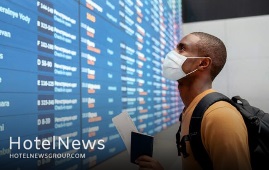
Iran is weighing plans to open its borders to vaccinated tourists though it isn’t yet clear exactly when tourists will be allowed to arrive. The Ministry of Cultural Heritage, Tourism, and Handicrafts have already started extensive consultations with other government ministries for the reopening of borders to vaccinated travelers, the deputy minister Vali Teymouri said on Wednesday. “One of the issues that we are pursuing strongly through various committees is the arrival of international citizens who have been vaccinated so that won’t pose a threat or concern to the Iranian society,” the official said. “We have put forward the proposal to the Ministry of Foreign Affairs, the Ministry of Health, and to the President (Hassan Rouhani) as well.” He went on to say that other countries are planning to open borders to vaccinated tourists. “We estimate that soon, various tourist destinations in the world, including the European Union, will open their doors to international tourists implementing a vaccine-passport approach….” Earlier in March, the Head of the Iranian Tour Operators Association Ebrahim Pourfaraj asked the government to issue tourist visas for the international applicants who have been fully vaccinated against COVID-19. “The Ministry of Health and the National Headquarters for Coronavirus Control can at least agree that the international tourists who have received the [second dose of] coronavirus vaccine would be allowed to enter Iran,” Pourfaraj said. He also lamented that the continuation of such a trend would result in losing international tourist markets more than before. “Or at least they should make it clear so that we can respond appropriately to foreign companies and tourists to not to miss the international tourist markets more than before,” he said. According to available data compiled by the tourism ministry, the number of foreign visitors to Iran plunged 94% in the first nine months of the past Iranian calendar year (ended March 20, 2021) as the coronavirus pandemic takes a heavy toll on the tourism industry. “Some 450,000 foreign travelers arrived in Iran for mainly medical or trade purposes during the first nine months of the year… tightened measures to tackle the new coronavirus has reduced international travel to the country by 94 percent,” Teymouri said. The coronavirus epidemic has ruined more than 1.5 million jobs in Iran’s travel sector, tourism minister Ali-Asghar Mounesan said in December. “Over 1.5 million jobs have been lost in the tourism sector of Iran due to the COVID-19 disease…. Many of the tourism-insiders are now unemployed or they are staying at home,” Mounesan said. Smart and responsible traveling should replace “do not travel” recommendations, the minister stressed, adding: “In our country, Corona has caused problems in the tourism industry and the worrying point is the continuation of this trend.” Tourism [industry of Iran] was growing before the corona [outbreak], its revenues reached $11.7 billion in 2019, which accounted for 2.8% of GDP, near the average share of tourism in the world GDP, which was 3.2 percent, the minister explained. The ancient land embraces hundreds of historical sites such as bazaars, museums, mosques, bridges, bathhouses, madrasas, mausoleums, churches, towers, and mansions, of which 24 being inscribed on the UNESCO World Heritage list. Under the 2025 Tourism Vision Plan, the country aims to increase the number of tourist arrivals from 4.8 million in 2014 to 20 million in 2025.
Create: May 24, 2021 Edit: May 24, 2021 Regional News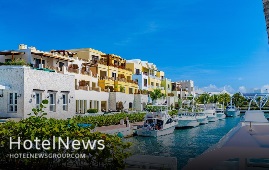
Latitude Vacation Club has entered into an agreement with Colebrook Financial Company, a leading lender to the timeshare and travel club industries to provide a receivable loan. Latitude Vacation Club’s home resort, Ancora Cap Cana Marina Resort & Villas is inside Cap Cana, a gated community of 33,000 acres—twice the size of Manhattan– located 10 minutes from Punta Cana’s International Airport. This is a first-time development for Cecil Latta, well known for his sales and marketing successes at Westgate Resorts, Tempus Resorts, and El Cid Vacations Club in Mexico. As CEO and Founder of Latitude Vacation Club, headquartered in Celebration, FL, Latta is focused on offering 20 year memberships in Latitude Vacation Club+ featuring Ancora Cap Cana Marina Resort and Villas. In addition to some the best Bill Fishing in the world, Latitude Vacation Club+ members may enjoy one of the Dominican Republic’s most famous attractions, Scape Park, as well as Punta Espada a Jack Nicklaus signature golf course rated number 1 in Mexico and the Caribbean since 2011, an equestrian center called Los Establos with FIFA certified soccer (football) fields. Bill Ryczek, Principal of Colebrook Financial said: “We’ve worked with Cecil Latta on other projects and are delighted to finance his new offering in the Dominican Republic. He’s been known for years as one of the top sales and marketers in the timeshare industry, and we’re glad to see him developing his own project for the first time. We think there’s some real opportunity for growth, and thus far sales have been terrific, despite current travel conditions. Once travel opens up, we expect excellent results.” Latitude and Cecil Latta have had a working relationship with Colebrook Financial Company’s Bill Ryczek and Tom Petrisko for years. Latta says, “Getting to know them, their personal and professional integrity made working with them a simple choice. What about Colebrook is outstanding? Even during the most challenging of times Colebrook has stuck to their lending plans when many others decided not to.” Colebrook is a pioneer in many forms of financing and began working with club products before most lenders. Few competitors can match their longevity in the industry. They enjoy a reputation for adapting to new situations more quickly than larger institutions.
Create: May 22, 2021 Edit: May 22, 2021 International News
Iran’s Minister of Cultural Heritage, Tourism and Handicrafts Ali Asghar Mounesan said in a meeting with the Russian Ambassador to Tehran Levan Jagarian here on Tuesday evening that deepening the bilateral relations is possible through collaboration between the two nations. Tehran favors further improvement of comprehensive bilateral relations with Russia, but this is possible through upgrading the two nations’ ties, said Mounesan. Referring to his first visit to Russia, the Iranian official said the signing of the Shared Action Program and lifting the visa requirement for tourist groups of both countries are among the most important steps taken in that respect. Ambassador Jagarian, too, in the meeting referred to the ongoing visit of a group of Russian tourism industry activists in Iran and noted that the group in its visit identified Iran’s tourism potentials and is scheduled to depart for Russia tomorrow (on Wednesday). The Russian tourists are very eager to visit unexplored and adventurist destinations, and Iran with its historical background, natural attractions and unique potentials in ecotourism is an appropriate destination for them,” he said, referring to the Russians’ enthusiasm for visiting Iran.
Create: May 19, 2021 Edit: May 19, 2021 Regional News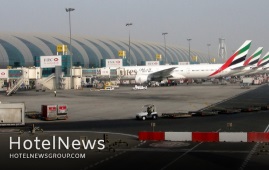
Dubai International Airport maintained its position as the largest airport in the world in terms of the number of international travelers, during the year 2020, for the seventh year in a row, according to the annual report of the International Airports Council, which monitors the performance of the air transport sector in the world. "Airports Council": in terms of the number of international travelers ... for the seventh year in a row Dubai International is the largest airport in the world in 2020 Dubai International Airport maintained its position as the largest airport in the world in terms of the number of international travelers, during the year 2020, for the seventh year in a row, according to the annual report of the Airports Council International, which monitors the performance of the air transport sector in the world. Council data, of which Emirates Today obtained a copy, showed that Dubai International Airport handled about 25.9 million international passengers last year, while the annual air freight volume in 2020 reached 1 million 932 thousand and 22 tons. Arrangement According to the data, Amsterdam Airport ranked second with 20.8 million passengers, a difference of more than five million passengers, compared to Dubai International Airport, which came in the forefront, while London Heathrow Airport fell to third place, recording 20.6 million passengers, while it ranked Paris airport ranked fourth with 19 million international passengers, while Frankfurt Airport came in fifth place with 16.8 million passengers. Passenger traffic The International Airports Council revealed that global passenger traffic in the 10 busiest airports in the world decreased by 45.7% over the past year, indicating that, in general, passenger traffic at the world's airports decreased by 64.6%, indicating the impact of the "Covid-19" pandemic. He explained that the impact of the pandemic led to a virtual halt of aviation in 2020, as the published data reveal the challenge that airports still face, stressing that it is still necessary to support the aviation industry through direct support to ensure aviation's ability to cope, rebuild connectivity and feed the global economic recovery. Recover The Council indicated that with some positive signs of recovery, especially in countries with high vaccination rates, a sustainable global recovery will only be achieved through the escalation of vaccination campaigns, the continuous development of digital health corridors, and the coordinated and coherent policy support of governments. Air shipments The Airports Council pointed out that air cargo was less affected by the pandemic, with volumes dropping by only 8.9%, to an estimated 109 million metric tons in 2020, equivalent to 2016 levels (110 million metric tons). He mentioned that airport operators also continue to work closely with their airline partners and other stakeholders to balance the current market realities and the cost of providing infrastructure while overcoming the crisis together. • Dubai Airport handled 25.9 million international passengers last year. • 1.9 million tons of air freight volume through "Dubai International" in 2020.
Create: May 16, 2021 Edit: May 16, 2021 International News
SERENA Hotel Aventura, Tapestry Collection by Hilton, a 10-story, 100-room boutique hotel, welcomed its first guests on May 13. Infused with the dynamic spirit of this highly celebrated South Florida destination, the upscale hotel features a variety of in-demand amenities – a highlight of which is a vibrant rooftop entertainment area and pool with 360-degree city views. “We’re excited to introduce a unique new boutique hotel that embraces everything there is to love about Aventura – a hotel we know our local neighbors are going to love to visit, as well as those coming to the area from out of town,” said Ziad Chantiry, general manager, SERENA Hotel Aventura. “With superior amenities and a central location between two major South Florida cities surrounded by numerous top attractions, there is no doubt that SERENA Hotel Aventura is the perfect place to be — whether guests are traveling for work or for play.” Situated in the heart of the Aventura Medical District, SERENA Hotel Aventura offers a restful escape and proudly takes its name from the Latin word “serēnus” – meaning clear, tranquil or serene. Upon arrival, guests are welcomed by a modern and inviting atmosphere that will make them feel at home, while being treated with highly personalized service. Accommodations With a focus on contemporary design and upscale amenities, SERENA Hotel Aventura features 100 spacious guestrooms, 30 of which are suites outfitted with separate living areas, kitchenettes, dining tables and large bathrooms including a separate shower and tub. Standard guestrooms also offer seating areas with sofas along with work desks, creating a space perfect to welcome leisure guests or those with business to conduct during their visit to South Florida. Dining Paying homage to the area’s diverse and rich culture, SERENA Hotel Aventura offers a Mediterranean-Spanish inspired restaurant, Cielo Rooftop & Lounge, serving as a social gathering spot for locals and travelers alike. In addition, in the lobby, SERENA Hotel Café offers indoor and outdoor seating with selections including Lavazza coffee, sandwiches, paninis, pastries, beer and wine. Amenities A rooftop pool and entertainment area features lounge seating and panoramic city views, creating a relaxing, yet lively space for guests to unwind and catch Miami’s picturesque sunsets. Guests can also keep up with their workout routine in a 24-hour fitness center offering weights, treadmills, ellipticals and stationary bicycles. In addition, a dedicated room is available for business travelers to conduct small meetings. Location Positioned in the heart of South Florida midway between Fort Lauderdale and Miami, SERENA Hotel Aventura offers nearby access to world renowned shopping at Aventura Mall, with brand names like Gucci, Louis Vuitton, Steve Madden and lululemon. Horseracing is nearby at The Village at Gulfstream Park, which also boasts an array of home stores, restaurants, art galleries, a bowling alley, fashion boutiques, and health and beauty services. Sunseekers can hit the shores of Sunny Isles Beach, just 15 minutes from the property. And, as the closest hotel to the Aventura Hospital & Medical Center, SERENA Hotel Aventura will be a safe haven for patients, families and medical workers. The hotel is also centrally positioned less than 30 minutes from Miami International Airport (MIA) and Fort Lauderdale-Hollywood International Airport (FLL). Guests visiting SERENA Hotel Aventura will enjoy peace of mind from check-in to check-out with Hilton CleanStay, Hilton’s new program for an even safer and cleaner stay. New procedures include contactless digital check-in through the industry-leading Hilton Honors mobile app, and a Hilton CleanStay room seal to indicate that the room has not been entered since being thoroughly cleaned. SERENA Hotel Aventura is part of Hilton Honors, the award-winning guest loyalty program for Hilton’s 18 world-class brands. Hilton Honors members who book directly through preferred Hilton channels have access to instant benefits, including a flexible payment slider that allows members to choose nearly any combination of Points and money to book a stay, an exclusive member discount and free Standard WiFi. SERENA Hotel Aventura is located at 2820 NE 214th Street, inside Ivory 214 – a new state-of-the-art, mixed-use project featuring retail and office spaces. The hotel is developed by Aventura-based Rieber Developments and operated by Driftwood Hospitality Management.
Create: May 16, 2021 Edit: May 16, 2021 International News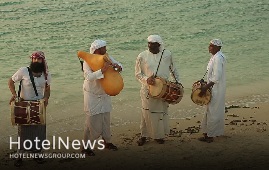
Head of Tourism Development and Cultural Heritage office of Kish Free Zone has said that the Persian Gulf island will become an international tourist destination for Fisher's New Year or as it called in the local language Nowruz-e Sayyad day. Nowruze Sayyad Day or Fisher's New Year is being celebrated annually on July 19. Locals, especially fishermen in southern regions of Iran, celebrate Nowruz-e Sayyad day, meaning the Fisher's New Year. Fishing is a major part of the island’s life and different seasons and periods are defined according to its cycles. Unlike other parts of Iran which celebrate the costumery Nowruz in late March, local people in southern Islands celebrate their New Year as well which called the Fisherman’s Nowruz, (Norwuz-e Sayyad) at the beginning of the main fishing season in late July. In this ceremony, the villagers wear new clothes and paint their animals with a red mud called Gelak and take them to the sea, and the indigenous women receive guests with cooked pastries made from dates called Ranginak. The locals would not go fishing or eat fish or other seafood on this day and believe that all fish are free and should reproduce. Head of Tourism Development and Cultural Heritage office of Kish Free Zone Mahan Modavvan told IRNA on Saturday that his organization, according to its goal and duties, is seeking to hold Nowruz-e Sayyad Day or Fisher's New Year celebrations in the summer festivals that are being held annually in this region. He said that various festivals such as fishing, seafood, water-based activities, and handicrafts exhibitions are scheduled in this celebration too. Although Kish Island is active in different sections of trade as well as oil and gas - it was even the greatest trading hub in the Persian Gulf during the Seljuk empire (1037-1194 AD) - its economy today is based mostly on tourism. The Island has the required infrastructure so that it has been called "the most complete international tourist region in Iran". Hosting about 1.5 million tourists every year, Kish Island has an average of 20,000 internal and international flights annually. It has 52 hotels (12 5-star ones), 2 apartment hotels and 2 resorts. However, the coronavirus outbreak hit the Island's tourism industry this year, so that it is now using its minimum capacity after two months of total lockdown.
Create: May 16, 2021 Edit: May 16, 2021 Regional News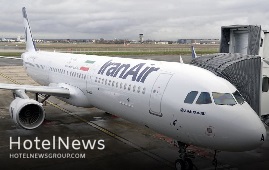
The average of international travels to and from Iran fell by 80 percent during the past Iranian calendar year 1399 (ended on March 20, 2021) from a year earlier. “During this period, 4,343,163 passengers entered the country, which included 3,030,464 Iranian passengers and 512,699 international travelers,” Mehr quoted Arezou Ghaniun, an official with the Islamic Republic of Iran's Customs Administration, as saying on Saturday. “From the beginning of 1399 to the end of it, we saw a significant reduction in passenger traffic to the country or vice versa in land, sea, rail and air borders, which were caused by various coronavirus restrictions.” International tourist arrivals to Iran plunged 72% during the first eight months of the year when compared to 2019, according to data compiled by the World Tourism Organization. Restrictions on travel introduced in response to the COVID-19 pandemic continue to hit global tourism hard, with the latest data from the UNWTO showing a 70% fall in international arrivals for the first eight months of 2020. Iran, however, has experienced different rates of downfall for inbound passengers over the past months. In the first three months of 2020 (January, February, March), the tourism industry of the country recorded negative rates of 90, 92, and 94 percent, respectively, compared to the same period last year, according to the organization. The fall reached 96 and 97 percent in April and May. And in June, a negative 84% was recorded. But the interesting point in the statistics published by the World Tourism Organization is a steep slope of the improvement of Iran’s tourism arrivals during the last two months, as such growth has leaped 35% in July and August. Optimistic forecasts, expect the country would achieve a tourism boom after coronavirus contained, believing its impact would be temporary and short-lived for a country that ranked the third fastest-growing tourism destination in 2019. According to the newest UNWTO Barometer, international arrivals plunged 81% in July and 79% in August, traditionally the two busiest months of the year and the peak of the Northern Hemisphere summer season. The drop until August represents 700 million fewer arrivals compared to the same period in 2019 and translates into a loss of US$ 730 billion in export revenues from international tourism. This is more than eight times the loss experienced on the back of the 2009 global economic and financial crisis. “This unprecedented decline is having dramatic social and economic consequences, and puts millions of jobs and businesses at risk,” warned UNWTO Secretary-General Zurab Pololikashvili. “This underlines the urgent need to safely restart tourism, in a timely and coordinated manner”. UNWTO’s Panel of Experts foresees a rebound in international tourism in the current year, mostly in the third quarter. However, some experts suggest the rebound could occur only in 2022. Travel restrictions are seen as the main barrier standing in the way of the recovery of international tourism, along with slow virus containment and low consumer confidence. The lack of coordinated response among countries to ensure harmonized protocols and coordinated restrictions, as well as the deteriorating economic environment, were also identified by experts as important obstacles for recovery. The Islamic Republic expects to reap a bonanza from its numerous tourist spots such as bazaars, museums, mosques, bridges, bathhouses, madrasas, mausoleums, churches, towers, and mansions, of which 24 being inscribed on the UNESCO World Heritage list. Under the 2025 Tourism Vision Plan, Iran aims to increase the number of tourist arrivals from 4.8 million in 2014 to 20 million in 2025.
Create: May 16, 2021 Edit: May 16, 2021 Regional News
The recovery in the leisure sector is imminent, and we argue that small groups aren’t far behind given that ‘revenge travel’ also implies a strong yearning to reconnect and congregate. A return to healthy numbers won’t be evenly spread across all hotels, though. It will favor those properties and those organizations that are already prepared for a diverse range of ramp-up scenarios, with others leaving revenue on the table by not having plans in place prior to this next phase. While hotels could hardly have predicted or prevented the advent of COVID-19, what we’ve witnessed in the latter half of 2020 is an industry that’s largely reactive to macroeconomic forces. Many operators have hinged their hopes on a near-complete reversal to 2019 demand levels and guest expectations without any earnest consideration for structural innovation and becoming more adaptable to the increased volatility in the market. Luckily, there are a few shining stars that highlight where hospitality needs to be for the decade ahead, and we’re excited to present one such case herein. Newport Hospitality Group (NHG) is a management company that’s been operating for 30 years and now has over 50 managed properties in its portfolio spread all along the Eastern Seaboard. Most fascinating for our current conversation is that the organization has some inherent ‘antifragility’ (to borrow a term from the brilliant statistician and option trader Nassim Taleb) in that it thrives relative to its comp set not only during good times but also during periods of economic turmoil. Upon reviewing their annual RevPAR growth metrics, they’ve beaten their respective markets in every year since 2005. Emphasizing this is that during the calendar year of 2020 NHG dropped 7.9% less than the US RevPAR average and the company also added 10 properties to its portfolio. This echoes their relative CAGR for the recession of 2008-09 where they also substantially beat the market. Success Starts at the Senior Level In trying to decipher the secret to the longstanding NHG playbook, we had an extensive discussion with Wayne West III, NHG’s President. He explained that success during turbulent times hinges upon decisive attention at the senior level combined with a thorough comprehension of the roles and responsibilities for the onsite operator, the corporate office team and the owner. Finding the best alignment amongst these entities – which may or may not have different goals – is an initial step that is often overlooked. So much time is spent in planning meetings and getting approval for changes and new initiatives that operations can easily get bogged down through ‘decision by committee’. In particular, hospitality is more exposed to this problem than other industries given our highly vertical organizational structures and lack of monetary empowerment at the property level. These types of inertial situations can easily be exacerbated by conflicting visions and orders stemming from the three-headed, ‘Cerberus-like’ discord amongst the owners, brand and management company. The key is to find a balance of responsibilities. “In many ways, the hotel industry’s current situation is like a street race,” quipped West as he explained how immobility can compromise a hotel’s success. “You don’t start revving your engine when the light turns green. You rev in neutral so that you can fly out of the gates once the countdown hits zero. This resembles the state of many hotels as we gear up for a roaring Q3 and Q4. At NHG, we established a playbook for swiftly reacting to hard times even before the Great Recession to the point where it’s now baked into our culture. All our managed properties have a clear chain of command and are staffed up to handle a surge of both transient guests and group RFPs.” Indeed, one case where having alignment at the senior level is mission critical pertains to the reemergence of groups, starting with reunions, corporate retreats and wedding receptions later this fall in advance of larger MICE-type travel sometime in 2022. With those small group gatherings taking place in the autumn or winter, the planning starts in late spring or early summer, and hotels must have a sales team and group rate plan fully set up to win these contracts. To this end, one reason for NHG’s success versus its comp set in 2020 was because it retained its sales team throughout. This meant that they were fully ready to enter any negotiation with attractive offers and coronavirus-specific programs such as full-floor or section buyouts and operational staff pods to limit cross-exposure. Emphasizing Succession Planning To ingrain the first lesson above, far better than a lengthy deliberation over the best possible approach is to implement a reasonably satisfactory course then act quickly to adjust the plan as market conditions evolve. To enable this ability to pivot, onsite leaders must have a certain degree of autonomy and freedom to act within a proscribed framework. But how do you develop a culture of empowerment? One critical point that West highlighted to that end was succession planning and how many hotels aren’t prepared for a return to normalcy because they furloughed too many of their team members. This is especially evident for sales teams, whereby without key managers kept up to speed on a property’s event capabilities, each RFP cannot be addressed through a preestablished process. This results in teams constantly playing catch-up and reacting week-over-week to new inquiries rather than looking ahead to new initiatives that will advance the hotel’s revenue prospects. To ensure this type of problem never sets in, NHG prides itself on promoting from within and executive retention, with nearly half of their senior teams staying with the company for over a decade and nearly a quarter staying for over 20 years. A sharp focus on retention like this means that the onsite operators are totally in sync with ownership and the corporate office, intrinsically knowing how to implement the latter’s directives and hastily deploy resources to make those changes a reality. “A property is only as good as its GM,” remarked West to close out our talk, succinctly describing how, if the GM gives his or her managers a clear and actionable plan without backtracking or indecisiveness, then success is all but guaranteed. In this sense, nurturing great teams, especially during hard times like the current pandemic, is vital for decreasing conflict and aligning operations prior to periods of increased demand. Particularly at the senior level, the time to make your organization nimble and imbue a clear command structure for rapid action was yesterday. But, with hindsight being what it is, a close second place would be today. It’s never too late to chart a course for a profitable decade ahead, and our hope is that you can learn from this brief examination of NHG to see how you can create a culture of success.
Create: May 8, 2021 Edit: May 8, 2021 Hotel Management
Calling all those looking to discover the outdoors and live with purpose, as owner and developer, Andrew Ashcroft, in partnership with Autograph Collection Hotels, announces the grand opening of the highly anticipated boutique resort – Alaia Belize, Autograph Collection. Spanning over 20+ acres and the first in San Pedro Town to sit on more than 1,000 feet of beachfront access, Alaia Belize is a 155-unit complex operating as the first true four diamond resort on Ambergris Caye. The eco-luxury development will be the first-ever Marriott International property in the country, upholding the high-quality standards of the brand and dynamic marks of the Autograph Collection – celebrating the founder’s passion, thoughtfulness of design, inherent craft and connection with the locale. “With deep family roots in Belize and the hidden gem being my home for over 20 years, I wanted to ensure that Alaia Belize captured the lively spirit, genuine hospitality and friendliness of the destination and locals. My team and I worked closely with the Marriott International team to bring it all to fruition and allow our future guests and owners an opportunity to immerse themselves into the Belizean culture,” said Andrew Ashcroft. “No detail went unnoticed as we wanted to ensure that our travelers will be able to experience a new level of luxury on one of the world’s most photogenic yet untapped destinations. We are now ready to show the world all that Alaia Belize has to offer and take the country to new heights.” Eco-Luxury Aesthetics Situated in the historic town of San Pedro – dubbed La Isla Bonita after the 1987 Madonna’s song about the island – Alaia Belize will allow hotel guests and residential owners to intimately connect with their surroundings as it was designed to stimulate all five senses. With interiors curated by renowned Brazilian designer Debora Aguiar, the boutique resort is meant to invite guests to touch, stay and feel connected to Mother Nature, from the warm and harmonious ambiance, woven textures, natural fibers and touches of greenery. The design-forward hotel features 155 guest rooms and suites, ranging from studios to three bedrooms, with a natural color scheme to complement the stunning oceanfront views. Seamlessly blending the indoor and outdoor settings, the rooms offer an average of 1,200 square feet indoors and almost 900 square feet in open air, per unit. On the residential end, Alaia Belize is comprised of 71 stylish studios, two- and three-bedroom condominiums and eight oceanfront villas. Owners who don’t live full-time in Belize can opt their condominiums or villas into a rental program booked through Marriott International’s reservation system and allow guests to live with a backdrop of deep blue waters. With exterior designs led by International Environments, the branded development features vertical green walls, specialty textured walls and crystal-clear glass windows to not interrupt any views of the tranquil Caribbean Sea and wild tropical foliage. Autograph Collection Hotels advocates for the original, championing the individuality of each of its 200+ independent hotels located in the most desirable destinations across more than 30 countries and territories. Each hotel is a product of passion and a personal realization of its individual founder’s vision, making each hotel singular and special: Exactly Like Nothing Else. Hand-selected for their inherent craft and distinct perspectives on design and hospitality, Autograph Collection hotels offer rich immersive moments that leave a lasting imprint. First of its Kind Experiences Raising the luxury bar in Belize, hotel guests and owners will have full access to first-of-its-kind amenities in the country, including Belize’s first-ever suspended rooftop pool and lounge with 360-degree views, the only luxury resort in Belize with a dive shop that also allows guests to receive a PADI certification onsite, K’in Spa & Wellness Center, a piano bar with a self-playing baby grand piano, kids’ club, adventure concierge, swimming pools with live DJs, branded golf carts and bicycles, and a live art gallery with local weavers, woodworkers and pottery makers to create custom handicrafts for guests to take a piece of Belize home with them. Catering to foodie travelers, Alaia Belize will have endless dining and bar options with five different concepts. Sea Salt will be the crown jewel of the property with fresh catches of the day, high-quality seafood and meat with a Belizean twist. For those looking to enjoy the tropical weather and gorgeous 360-degree views of the Caribbean Sea, Alaia will have a Vista Rooftop restaurant concept with small plate offerings, such as sushi, poke bowls and conch for lunch, dinner and late nights. The beachfront hotel will also have The Deck and Beach Bar restaurant for those looking for an open-air beachside lunch or dinner with local favorite dishes, such as tacos, ceviche, burgers, fish sandwiches, wraps, salads, pizza and classic cocktails. Alaia Belize will also have a Piano Bar to offer an upscale lounge setting for breakfast, lunch, dinner and late-night with small pastries, cocktail snacks and high-end wine and cocktails offerings from Alaia’s very own mixologist. Lastly there is the The Terrace Bar for lunch and dinner with flavorful items, such as burgers, sandwiches, salads, ceviche and more. In true Belizean celebratory fashion, this area of the hotel will have a lively spirit with DJs and in-pools cabanas for a VIP experience. Un-Belize-Able Destination “My team and I had a chance to visit with Andrew Ashcroft at the Alaia Belize earlier this year, while the property was still under construction. I am pleased that the day has finally come to open the doors of this beautiful four-diamond resort on the island of Ambergris Caye. It is a great milestone for the team and the country, as it is a testament of our growth to see high-end brands like Autograph Collection from Marriott International migrating into Belize, elevating our travel scene,” said Hon. Anthony Mahler, Belize’s Minister of Tourism and Diaspora Relations. “The government is fully supportive of hotel developments and legacy projects such as Alaia Belize, and we are incredibly proud of all the positive steps the Belize tourism industry is making to restore the confidence in travel among our international visitors.” In October 2020, Belize officially reopened Philip Goldson International Airport to international visitors for leisure travel. As of January 2021, Belize moved on to Phase 4 of its reopening plan with the full reopening of the overnight tourism sector and allowing visitors to move around the country freely. In December 2020, Belize received a Safe Travel Stamp by the World Travel & Tourism Council (WTTC) in recognition of the country’s enhanced health and safety protocols. To uphold the certification, the Belize Tourism Board created the Tourism Gold Standard program to ensure that all hotels, restaurants and tour operators adapt and maintain health and safety policies, including sanitation practices, social interactions and standard operating procedures while ensuring minimal impact on the guest experience. Known as the hidden gem of Central America and Caribbean, Belize’s clear blue waters and Caribbean culture is home to endless historic offerings, a variety of adventures and a melting pot of cultures. Just moments away from Alaia, owners and visitors can experience more than 200 caves filled with several preserved Mayan Temples, including Xunantunich (the second tallest ruin in the country), lush jungles, rainforest canopies, and archaeological sites including the Actun Tunichil Muknal Cave. For those looking to take a deeper dive and explore the beauty of Belize’s natural underwater locations, Alaia is 600 meters away from the world’s second largest barrier reef and a few minutes away from the ultimate world-class and unrivaled destination – The Great Blue Hole. Ambergris Caye and Alaia Belize can be reached via Philip Goldson International Airport in Belize City. Then, travelers have to take a short 10-minute flight to San Pedro Airport or book tickets for a water taxi. Alaia Belize’s hotel concierge is available to help all guests book travel arrangements.
Create: May 8, 2021 Edit: May 8, 2021 International News
At a time when many of the world’s events continue to be plagued by COVID-19, making plans even a week in advance may seem difficult, much less 10 years into the future. Nearly overnight, the dialogue shifted from “where to for lunch?” to “can you hear me?”. And as hotels emptied out and travel restrictions drag on, many may wonder, where lies the future of hotels? To answer this question, it is first important to recognize that the hotel sector does not exist as an individual silo, but one which forms part of a much wider network: the ecosystem of how we live and work. The cities in which we live today are a reflection of how humans have shaped our environments to fit our social and economic needs. For generations, urban agglomeration had been the standard of cities, and central business districts (CBDs) thrived as we commuted between living in one area and working in another. Accordingly, hotels have typically focused on serving transient international or regional visitors, primarily playing one of two roles: a place to sleep and meet during our business travels, or a place of respite for our leisure getaways. Today, rising interest in (semi-) permanent remote working and a greater desire to live outside of high-density urban areas may signal yet another impending change in the way we live and work. Could deurbanization or decentralization continue on this trajectory – and what would that mean for hotels? In a Cushman & Wakefield webinar, Richard Pickering, Chief Strategy Officer, EMEA and Borivoj Vokrinek, Strategic Advisory and Head of Hospitality Research EMEA from Cushman & Wakefield, traced the paths of how our societies and hotels have evolved, from their very beginnings to where they could be in the future. Blast from the past: The evolution of travel, from immobile to transient lifestyles Since the early days of civilization, the structure of our society has dictated where we lay our heads every night. When humans lived in self-sufficient tribes and settlements, there was no need to travel or sleep anywhere other than in our own beds; while as society progressed, business travel dominated as merchants travelled for trade. And then, with higher disposable incomes, more free time, rising globalization and the internationalisation of trade, there came the birth of mass leisure and business travel. Clearly, humans have become increasingly mobile – and the advancement of technology will only continue to push us towards this trend. Similarly, the role of accommodation providers has also evolved immensely with our changing social and technological landscape. From being a place for shelter and food to becoming a place to meet and then emerging as a provider of experiences, hotels have always evolved alongside our society and the cities in which we live. In today’s context, our ‘social awakening’ has brought rising calls for better work-life balance and a heightened desire to travel and ‘unwind’. To perpetuate this image, hotels have taken on an additional role: a promoter of one’s social status, driven by the growing prevalence of social media. Yet, this evolution will not end there – with our growing mobility, the role of hotels will only continue to expand to meet our transient needs. “There’s no virtual pivot for hotels,” Pickering emphasized. As our society and cities continue to evolve, so will hotels. ‘The variable impact (of COVID-19) on different sectors’ – C&W Webinar Part 1 of 2: Evolution of our cities and what it means for real estate, presented by Richard Pickering. Note: The relative positionings are for illustration purposes only. Swimming against the current – the rise of remote working Our cities of today, however, have been far from perfect, in fact, some may even argue that urbanisation in the developed world has become a myth. “In city centres, centralized demand, when combined with scarce supplies, pushes up rents for businesses as well as housing costs. [Meanwhile,] increasing city sizes means increasing commute times, which reduces free time and worsens pollution – all while our creaking infrastructure amplifies the penalties of distance,” Pickering suggested. It is unsurprising, therefore, to see an increasing number of digital nomads who choose to forego homeownership entirely to traverse the world in search of the much-revered triple-threat ‘office spaces’: stable Wi-Fi, multiple charging points and good coffee. In fact, as Global Workplace Analytics estimates that 25-30% of the workforce will telecommute multiple days a week by the end of 2021, some argue that ‘working from home’ may eventually become ‘work from anywhere’. And with a number of hotels already offering ‘work from hotel’ packages or even subscription services, it is evident that hotels are well-placed to capitalize on this trend. Forward to the future: Super-commuters in a decentralized world. As the idea of remote working with occasional commutes to the workplace gains wider acceptance from both employers and employees, it seems that we are at the tipping point of a new emerging trend: super-commuting. Super-commuters live in one city or country while their office is in another, commuting between the two from time to time – and this will have implications for hotels. “In the future, if more of the workforce is living in remote areas, it is actually likely that they will use hotel accommodation more frequently [for the days that they do travel to the office],” Vokrinek explained. Importantly, increased remote working does not mean a lesser need for meetings and social interactions – rather, the contrary is most likely true. “Not only will employees be living further away and have fewer interactions amongst each other, but clients will also be living outside of cities. So, there would be a need for more structured [and deliberate] meetings, not only on an international scale, but locally and regionally as well – and that will drive demand for meeting facilities in hotels,” Vokrinek suggested. In fact, not only will the role of hotels evolve, but there will likely be a greater need for hotels in the smaller communities that will form in these areas where such super-commuters will typically work from. “Historically, those towns and places were probably mostly residential, with limited [interest from investors] and limited amenities. However, if people will be living in those local hubs on a regular basis and commute less to the central core office, there will be a need for amenities in those local hubs and this will include hotels. Of course, the demand will be softer, so the hotels will probably be smaller. They will need to be more flexible; most likely a hybrid concept within mixed-use developments, [but there will be a need for them”] explained Vokrinek. ‘Hotels within a new eco-system of workspaces’ – C&W Webinar Part 2 of 2: The role of hotels as cities evolve, presented by Borivoj Vokrinek. The who and the why? Towards a new kind of work-life balance Although the notion of such super-commuters forming a considerable proportion of our workforce seems to lie somewhere in the distant future, with the prevalence of low-cost airlines and the advancements of technology, experts speculated, as early as 2014, that there could already be hundreds of thousands of super-commuters worldwide. This decentralization of the workplace is likely to pick up not only because of our increased mobility and higher level of comfort with remote working, but also due to the attractive benefits it may bring to both employees and employers. As Pickering explained, “In a digitally enabled world where distance no longer matters, […] I see a real opportunity for employees to derive labour arbitrage and live a better life” – even taking a small pay cut from a London salary to work from the Greek island of Kefalonia could be well worth the trade-off”. On the flip side, employers may also realize that sourcing the best (and/or cheaper) talent will no longer be bound by geographical borders. And with higher pressure on costs, especially in the short-term, employers too may find themselves increasingly attracted to the lure of allowing super-commuting. The shift, not death of business travel Many soothsayers have begun lamenting the death of business travel, citing the rise of video conferencing and growing realization that not all meetings call for an 8-hour flight and 2-hour layover. However, while the increased usage of video conferencing will undeniably replace some business travel, especially in the short-term, it would be hasty to presume that this would necessarily lead to a significant decline in business travel in the long-term. Rather, as we become increasingly accustomed to living a mobile lifestyle and working remotely, this emerging form of business travel will likely broaden the opportunities for hotels, through catering to the needs of a more decentralized workforce and their clientele. As Vokrinek further suggested, “Some part of the demand will become more regular and predictable, and this will open opportunities for more membership or subscription concepts and increase the importance of loyalty programmes.” Despite the short-term challenges faced by the hotel industry, it is evident that the role of hotels has constantly expanded to meet the new needs of the times – and there is no reason to assume that this time will be any different. Our society is undoubtedly becoming ever more transient, spending more time outside of our homes. But even then, we will still need places to eat, sleep, work and relax. With the rise of remote working, we will likely crave physical interactions and seek places to meet with others more than ever before. Therefore, while the current pandemic has had an indescribable impact on the hotel sector, its long-term implication is that it has catalysed the evolution of how and where we live and work, with hotels destined to play a much bigger role in our increasingly mobile lifestyles and new work ecosystems.
Create: May 6, 2021 Edit: May 6, 2021 Hotel Management
